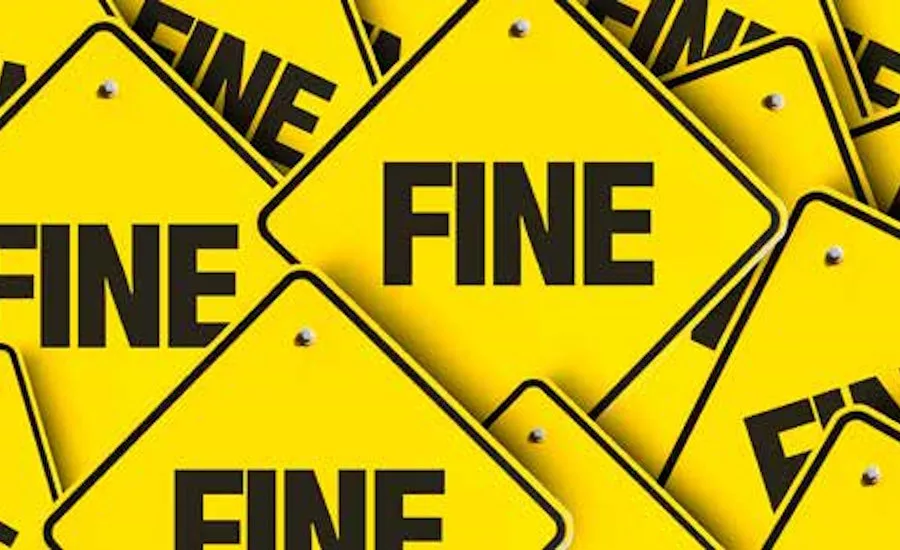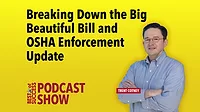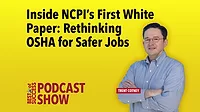IRE 2024
IRE Session Preview: OSHA Citation? Consider These Defenses
Learn how to preserve your rights from the beginning of an OSHA inspection through the citation process

If your roofing company has received a citation for violating OSHA standards, you may wonder what to do next. Those fines can be crippling, and when word gets out, your reputation can take a hit as well. Before you agree to rectify an issue or pay a fine, take the time to review the problem at hand and ask yourself the following questions. Then, you can determine your defense options.
Was Compliance Possible?
Although OSHA sets specific requirements, they may not always be realistic for your project. Complying with them in some circumstances could even be unsafe or unwise. For example, perhaps your roofing installation job could not be completed with conventional methods due to materials or proportions. If this is true for you, you must prove the "impossibility of compliance" defense, explaining how the standard was not feasible and/or posed a threat to your workers. You should also be prepared to explain your alternatives.
Is an Employee Responsible for the Violation?
Some employees may not follow the guidelines even after being trained and having the necessary resources to comply with OSHA regulations. In this case, an "unpreventable employee misconduct" defense might be relevant. If you choose to pursue it, you will need to demonstrate that the employer and supervisor were unaware of, did not participate in, and did not observe the violation; the employee’s actions violated company policy; and the employee’s conduct solely and directly caused the infraction. You will also need to show a robust safety policy, evidence of discipline and enforcement, and routine audits to monitor company safety.
2024 IRE Seminar Sessions
Title: OSHA Defense for Roofing Contractors
Speaker: Trent Cotney; Partner, Adams and Reese
Date: 7:45-9:15 a.m., Thursday, Feb. 8
Room: N240
Were Workers at Risk?
When issuing a citation, OSHA must prove that substandard conditions put employees in danger. If that is not the case and your workers were never exposed to harm, you can consider the "no-risk to employee" defense. To prove it, you must provide documentation and offer solid arguments supporting this position.
Was the Incident Outside the Employment Scope?
You could utilize the "not in the scope of employment" defense if the violation resulted from actions outside the normal employment expectations. To argue this position, you will need to provide documentation and other evidence that the actions resulting in the infraction were explicitly addressed and prohibited by company policy. I have often said that the party with the best paper wins the day. By that, I mean if you keep accurate records and document everything, you stand a better chance of arguing your case. So be sure to keep your company policies and employee manual updated and record issue reports diligently.
Did the Worksite Have Multiple Employers?
When more than one contractor is present on a worksite, it is possible that the wrong employer was held responsible for a violation. Different contractors have different roles on a multi-employer site, and you must define those. These include what employer had general responsibility for the entire site, which employer caused the hazard, which one exposed workers to it, and which one should have corrected the hazard. You may fall into one or more of these categories.
For the "multi-employer worksite" defense, you will need to prove that you neither created the hazard nor exposed workers to it. For subcontractors, you will need to prove that you are not a controlling contractor responsible for the safety of your sub-labor.
Final Advice
As discussed, you may have grounds to contest an OSHA citation. It is critical that you act quickly and recognize that regardless of whether you are under federal or state equivalent guidelines, you obtain legal advice. An experienced OSHA attorney can explain what documentation you need, guide you in investigating the incident, and represent you during hearings, negotiations, and trials.
In addition, your lawyer can help you address any policies and training that should be revised, guide you in implementing preventive measures going forward, and navigate citation classifications. These strategies will help reduce your risk during future OSHA investigations.
WHAT YOU WILL GET:
- A glimpse into the violation-defense process from inception to citation
- A better understanding of how to defend against an OSHA violation
- Exposure to the techniques and tactics OSHA investigators use
- An understanding of how to preserve your rights and defenses
The information contained in this article is for general educational information only. This information does not constitute legal advice, is not intended to constitute legal advice, nor should it be relied upon as legal advice for your specific factual pattern or situation.
Looking for a reprint of this article?
From high-res PDFs to custom plaques, order your copy today!






